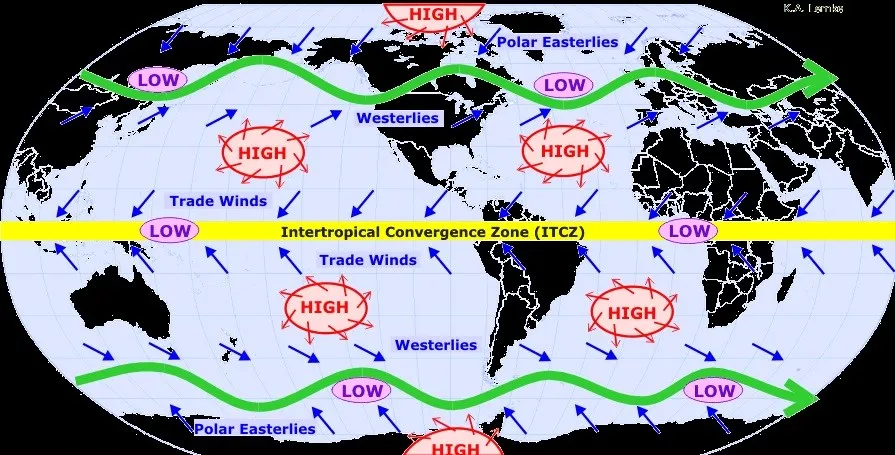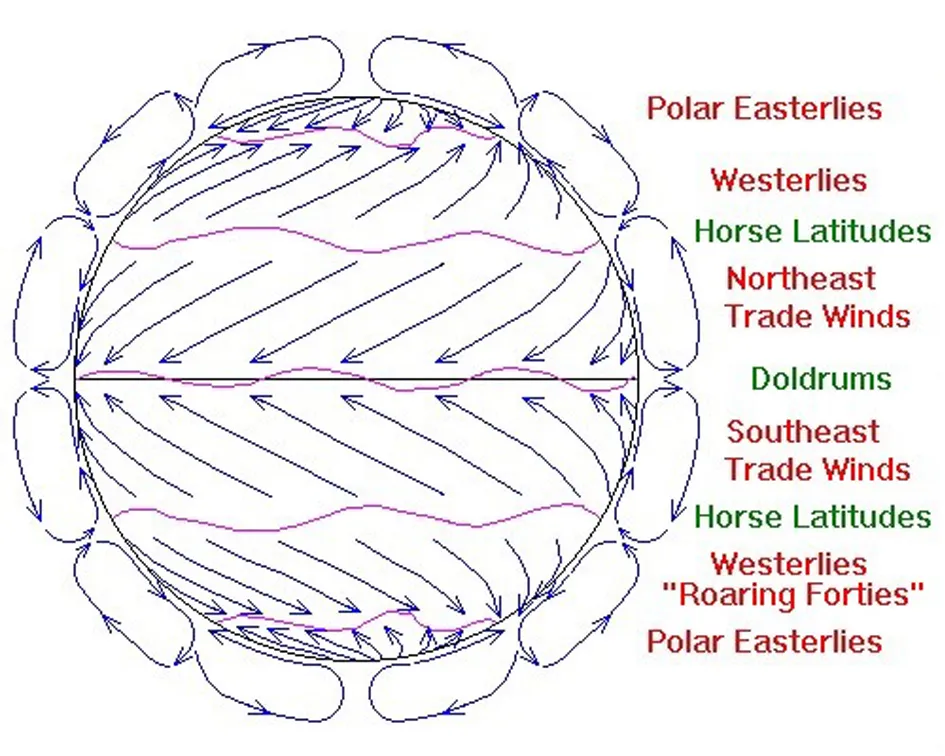If you want to know about the climate and elements of climate or site climate or climatic zones in India, please click the link.
The global wind pattern is largely driven by the uneven heating of the Earth’s surface by the sun, which causes differences in air pressure and leads to the movement of air in the atmosphere. Air moves from high-pressure areas to low-pressure areas, which creates a global pattern of atmospheric circulation.
1) Global Wind Patterns
- The global wind pattern is also known as the “general circulation” and the surface winds of each hemisphere are divided into three wind belts:

- Polar Easterlies: From 60-90 degrees latitude.
- Prevailing Westerlies: From 30-60 degrees latitude.
- Tropical Easterlies: From 0-30 degrees latitude.
2) Global Wind Patterns ( Conti……)
- There are three other types of wind belts, also. They are called Trade Winds, Doldrums, and Horse Latitudes.

- Horse Latitudes – The horse latitudes are subtropical regions known for calm winds and little precipitation. The horse latitudes are regions located at about 30 degrees north and south of the equator.
- Trade Winds – Trade winds blow from the horse latitudes to the low pressure of the ITCZ (The Inter tropical Convergence Zone).
- Doldrums – Doldrums is the same thing as the Intertropical Convergence Zone, it’s just a different name for it. This name originated from some sailor who noticed the stillness in the rising air and called it the “doldrums”.

3) Air movement and ventilation around the building
There are four main ways in which buildings are naturally ventilated: –
- Single sided ventilation
- Cross ventilation
- Stack effect
- Reverse stack effect

Single stack & Reverse stack effect
- The flow of air into and out of a building when the outside temperature is cold (stack effect) and when the outside temperature is hot (reverse stack effect).
- Not shown is the movement of air up or down within the building that occurs as a function of stack effect or reverse stack effect condition.

4) Air movement around the buildings
i) Air stream separation at the face of buildings

- Figure shows how the air stream separates on the face of a tall block, part of it moving up and over the roof part of it down, to form a large vortex leading to a very high pressure build-up.
ii) Reverse flow behind a tall building

- If a low building is located in the wind shadow of a Tall block , the increase in height of the obstructing block will increase the air flow Through the low building in a direction opposite to that of the wind.
iii) Air flow grid iron pattern

- Single storey buildings are placed in rows in a grid-iron pattern, stagnant air zones leeward from the first row will overlap the second row.
iv) Air flow: Checkboard layout

- If the buildings are staggered in a checker-board pattern, the flow field is much more uniform, stagnant air zones are almost eliminated.
Overall, the global wind pattern and air movement are an important factor in determining the Earth’s climate and weather patterns, and they play a critical role in the distribution of heat and moisture around the planet.